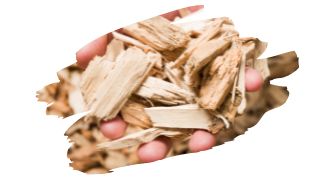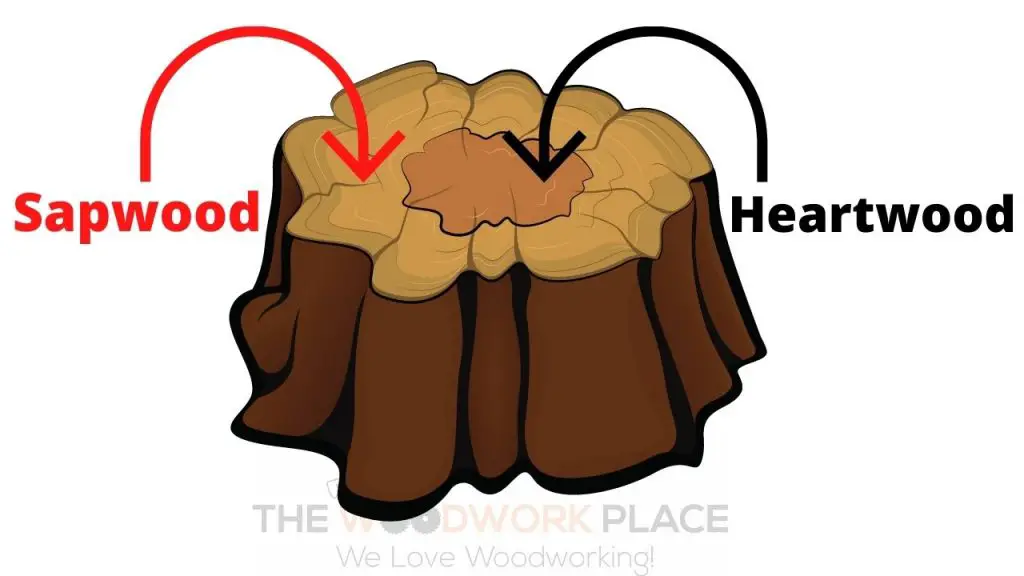Do you know the real key to composting wood chips? Nitrogen. And lot’s of it.
Nitrogen helps to accelerate the break down of composting material, such as wood, rotting vegetables, and garden waste.
So, adding a nitrogen-rich accelerant to your compost is going to really speed things up. But, does urea have enough nitrogen to break down those wood chips?
Well, in this post, you will discover what the C:N ratio is, and why it matters for composting. You’ll also find out just how much nitrogen there is in wood chips — and why you will need to add more if you want that pile to break down.

This post may contain affiliate links to products that we receive a commission for (at no additional cost to you). Learn more here.
What’s The Best Way To Speed Up Wood Decomposition?
To put it simply; heat and nitrogen.
A compost bin will speed up the process of hot composting. That’s because a compost bin will heat things up — literally — encouraging increased microbial activity.
Hot composting fast-tracks the otherwise months long break down of wood chips, reducing it to a matter of weeks.
Another easy way to speed up wood chip decomposition, is by adding nitrogen-rich material into the pile. These materials are typically things such as vegetable waste or garden waste.
Related Post: Should You Really Try Hot Composting Wood Chips?
But Why Is Nitrogen So Important for Decomposition?
It’s less to do with the nitrogen itself, and more to do with the bacteria that live off of it. The bacteria that do all of the hard work of decomposing wood, feed on nitrogen.
And, the more nitrogen you give them, the harder they work.
Now, initially, these microbe’s will use up all and any of the nitrogen they can find in those wood chips. Problem is, wood chips don’t have a lot of nitrogen in the first place.
How Much Nitrogen Do Wood Chips Have?
To put things into perspective, optimal composting material will have a C:N (Carbon to Nitrogen) ratio of around 30:1. So, for every 1 part of nitrogen it contains, it has 30 parts carbon.
But, when we look at wood chips, tree bark chips have a C:N ratio that is around 100:1. And wood chips from the sapwood/heartwood has a C:N around 500:1.

Which means that wood chips have three times less nitrogen than otherwise ideal composting materials.
In other words, those bacteria will need more nitrogen if they’re going to decompose those chips. And that nitrogen will have to come from somewhere.
Related Post: Is Rotten Wood Good For A Compost Bin? (What To Do With Rotten Wood)
Why Does It Matter If Microbes Don’t Have Enough Nitrogen?
If you’ve scattered wood chips over top soil, then those bacteria will feast on the nitrogen in the soil.
This is referred to as ‘Nitrogen Drawdown’. And it’s when those composting microbes leech excess nitrogen from soil itself. This leaves very little nitrogen behind for nearby plants to survive.
So, Is Urea A Good Source Of Nitrogen For Wood Chips?
Yes it is. The synthetic urea, (that you can purchase as compost fertilizer), is very rich in nitrogen. It has a C:N ratio of 0.4:1, which is incredibly high.
It is — by far — one of the single best sources of nitrogen that you can add to a composting wood chip pile.
To Wrap Up, Here Are The 3 Key Takeaways From This Post…
- 1). Two of the best ways to speed up the decomposition process of wood chips is heat and nitrogen.
- 2). Synthetic urea is a great source of nitrogen fertilizer.
- 3). The optimal C:N (Carbon to Nitrogen) ratio of composting material is around 30:1. However, wood chips have around a 500:1 C:N ratio.
References:
Gruda, Nazim. “The effect of wood fiber mulch on water retention, soil temperature and growth of vegetable plants.” Journal of sustainable agriculture 32.4 (2008): 629-643.
Carbon-to-Nitrogen Ratio | Science Direct
